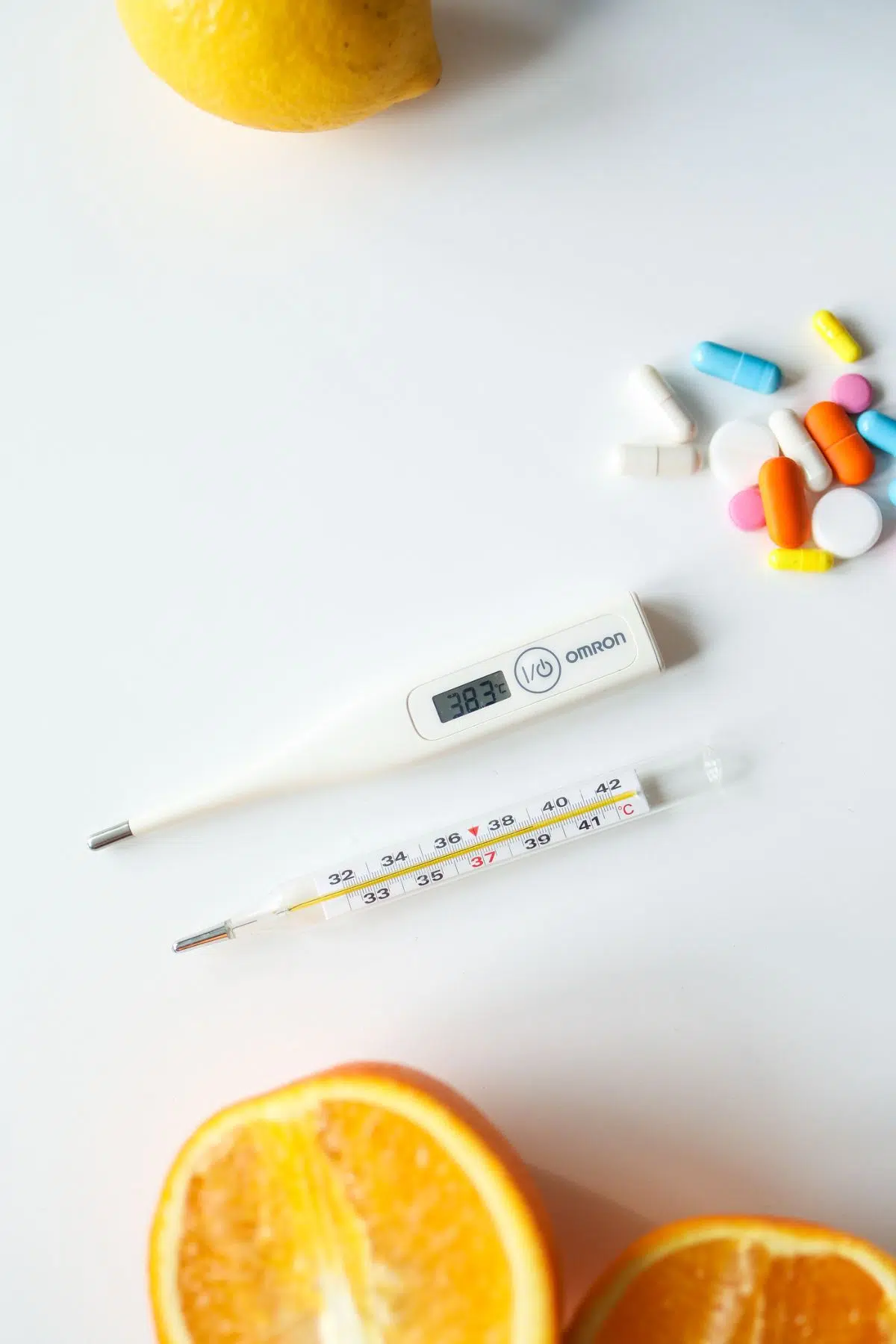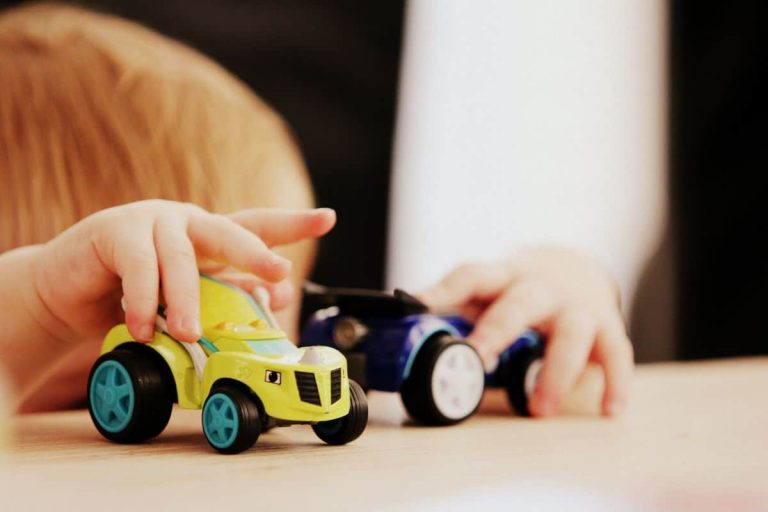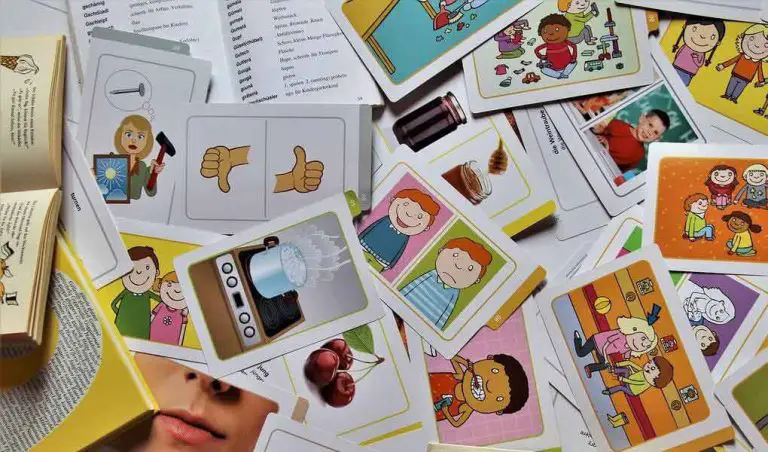My Toddler’s Fever Is 106: Everything You Need To Know!
Is your child’s fever 106 or higher? You’ve come to the right place. Here’s everything you should know and what you should do about it!
Your child wakes up in the middle of the night and OH NO! They have a fever. Now what?
Note: This post may contain affiliate links, which means if you buy from my link I might make a small commission. This does not affect the price you pay. See the full affiliate disclosure here.
What is their temperature? How high is too high? Should you call the doctor? Should you give them medicine?
Have no fear! I’ll answer all of your questions and more.
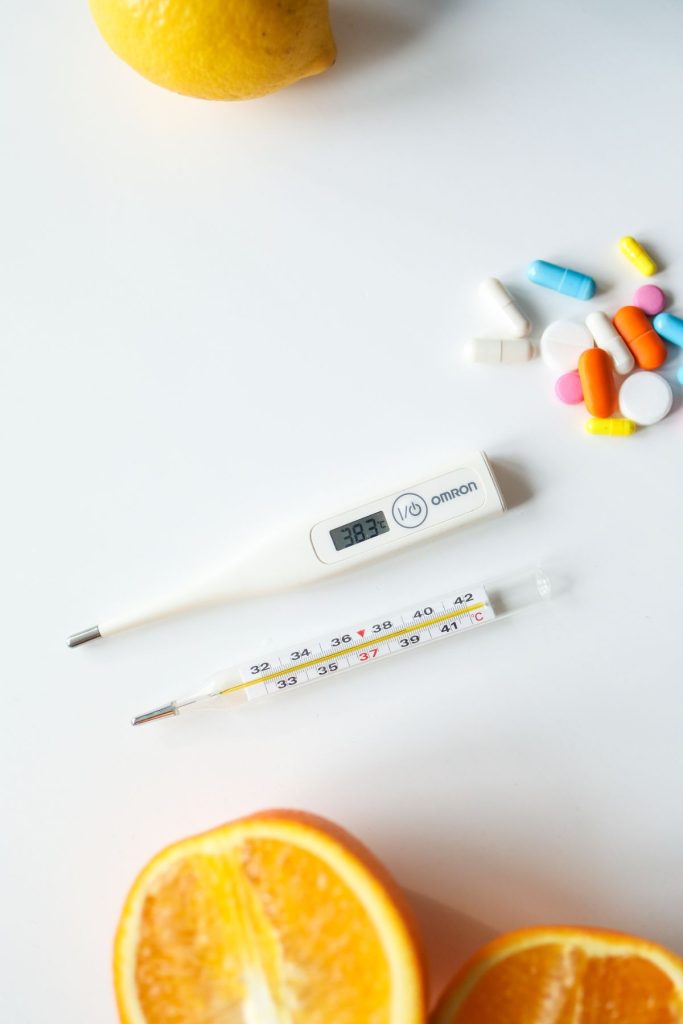
What Is A Fever?
First, we need to discuss what a fever is. A normal body temperature is 98.7 degrees Fahrenheit. A temperature of 100.3 or higher is considered a fever.
Fever’s can be a good thing! A fever is the body’s normal response to fight infections.
Teething, getting a vaccine, being overheated, a bacterial infection, or viral infections are all common causes of fever.
Most doctors recommend giving your child medicine for a fever if it’s 102 degrees or more. If your child has a fever, but their activity level is the same, don’t give them medicine. If your child starts feeling poorly, give them some medicine.
What Are Symptoms Of A Fever?
The following symptoms are signs that your child might have a fever.
- Your child might not be as active as they usually are.
- They might be more snuggly and cuddly.
- They might be less hungry.
- Your child might not be as talkative as they usually are.
- They might be fussier.
- They might feel warm or hot.
How Does Our Body Reduce Our Temperature?
Our bodies are truly incredible! Here are four ways they reduce our temperature naturally.
- Our bodies move blood away from or to our skin.
- We sweat more or less than we normally do.
- Our bodies hold onto or get rid of water inside us.
- They make us want to get to a colder or warmer environment.
Ways We Can Lower Our Child’s Temperature
There are a few ways you can lower your child’s temperature and bring it back to a normal temperature range. Here are five ways you can help bring down a high temperature.
- Have your child not wear very much clothes.
- Give them a fever medicine.
- Have them drink lots of cool liquids.
- They can take a lukewarm bath or sponge bath.
- You can put cold washcloths on your child’s forehead.

What Medicines Reduce A Fever?
There are two medicines that are most frequently prescribed as fever reducers. Acetaminophen, or Tylenol, and Ibuprofen, or Motrin, are the two fever medicines. They are both over-the-counter medications.
How High Is Too High?
Our body raises our temperature while it fights off and kills germs. The germs can be from bacteria or viruses. Fevers usually last between three to four days.
Our brains and bodies work to keep most fevers at 104 degrees or lower. They can get to 105 or higher. Temperatures of 105-106 degrees still aren’t dangerous. They won’t cause brain damage, so you don’t have to worry about that!
Sometimes, a high fever can cause a seizure. Only kids between the ages of six months to five years old can have them. They’re called febrile seizures. They only happen during a fever and they won’t cause any harm to come to your child.
Call your pediatrician right away if a baby from birth to three months of age has a temperature of 100.4 or higher. For children older than three months old, call the doctor with a fever over 105 degrees.
It’s not a bad idea to take your child in, or call the doctor, for 103-104 degrees. They might have an ear infection and could be in pain. Always call the doctor if you are concerned.
Which Thermometer To Use
Here is a guide to help you know which temperature to take! Use a digital thermometer if you can. It will help you get an exact temperature.
- Rectal Temperature: 100.4 degrees or higher
- Oral Temperature: 100 degrees or higher
- Armpit Temperature: 99 degrees or higher
Keep in mind that an ear thermometer and temporal temperatures shouldn’t be used for children younger than six months old.
When Should You Call The Pediatrician?
Here are a few reasons you could call your pediatrician.
- They’re crying uncontrollably.
- They have a fever for more than 72 hours.
- It’s difficult for them to breath.
- They have a stiff neck.
- There are purple spots on the skin.
- They don’t have an appetite.
- It’s hard for them to swallow.
- They are looking or acting very sick.
- It’s hard to wake them up.
- Their fever is greater than 102 degrees Fahrenheit.
- It’s painful to them when they urinate.
- They have a history of seizures.
- You are concerned.
Things To Remember
Here are some more tips to remember when giving your child medicine.
- Just because your child feels warm to the touch, doesn’t mean they have a fever. If they still feel warm in 20 minutes, they probably have a fever. Use a thermometer to check.
- Always check a child’s temperature before you give them any medicine.
- If your child doesn’t have a fever and has a normal temperature, don’t give them any medicine.
- If they have a fever but the child acts normally, don’t give them any medicine.
- It’s good to remember that lots of cold and cough medicine have acetaminophen and ibuprofen in them.
- Your child only needs to take medicine if they have a fever of 102 degrees or higher.
- Even if your child has a fever, you don’t have to give them medicine. Their body should bring it down in a few days on its own.
- You can alternate between ibuprofen and motrin ( which are an over the counter medication) for a short time, but there are some really important things to know if you do. I wrote a whole post about it here!
- It’s common to have a fever go away in the morning and come back at night.
- Have your child drink plenty of fluids when they have a fever. Watch out for signs of dehydration.
- Medicine can help bring fevers down two or three degrees.
- When the medicine wears off, your child can have a fever again.
- Only temperatures over 108 degrees can cause brain damage. Call a doctor immediately, take them to an urgent care, or take them to an emergency room if their fever gets this high.
- Less than 5% of children have a seizure with a high fever. They don’t have any permanent damage, and they don’t raise the risk of having seizures without having a fever.
- Children with fevers are more likely to spread the virus if they have one.
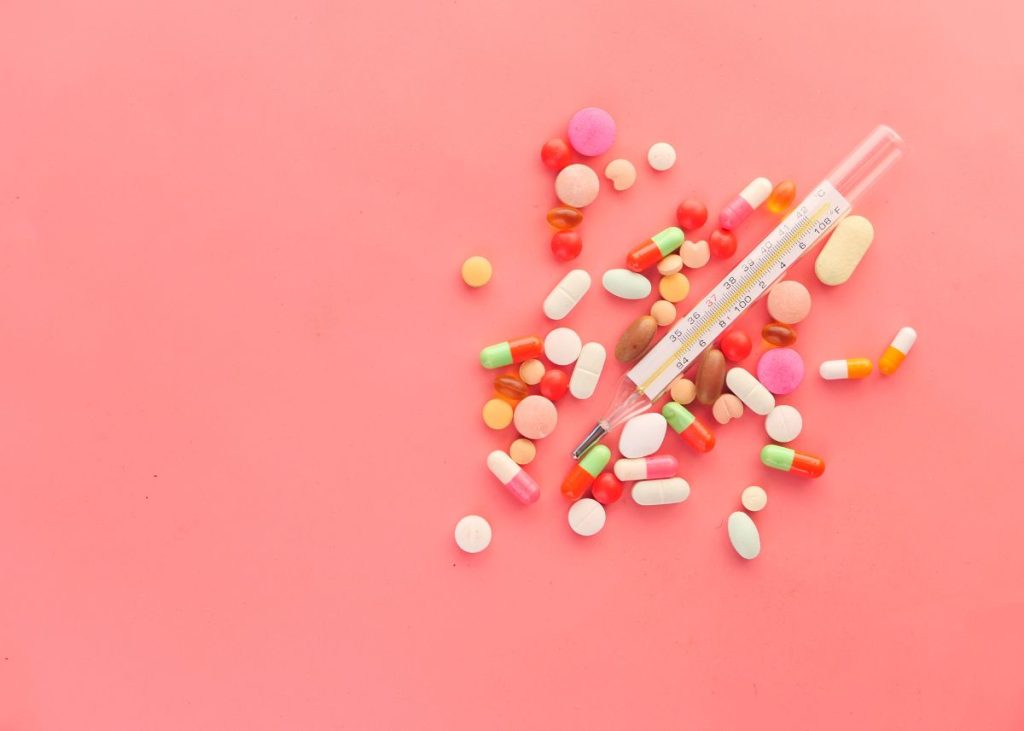
The Bottom Line
How your child looks and acts is the most important thing to remember when they have a fever. Fevers are actually good for children! They help a body fight infection. Fevers help sick children get better.
Higher fevers of 105, 106, or 107 are still not dangerous and won’t cause permanent harm. Treat them like normal low-grade fevers.
Give them a fever reducing medicine if you’d like. Have them wear light clothing. Put a cold rag on their forehead. Have them drink cold liquids.
Closely monitor their temperature. A high temperature of 106 fever isn’t dangerous, but if the temperature rises to 108 degrees, it can cause brain damage.
The best thing you can do when your child has a fever is to stay calm. Hang in there and everything will work out! And always contact your health care provider if you have any concerns.
FAQs
What can cause a 106 fever in toddlers?
Your child’s fever of 106 degrees could be caused by teething, getting a vaccine, being overheated, ear infections, a viral infection, or a bacterial infection.
What to do when a child has a fever of 106?
When a child has a fever of 106 degrees, you can give them a fever reducer. Have them wear light clothing. Put a cold rag on their forehead. Have them drink cold liquids.
Closely monitor their temperature. A 106 fever isn’t dangerous, but a fever of 108 can cause brain damage.
Is a 106 fever fatal?
No, a fever of 106 is not fatal in young children. Call your pediatrician so the doctor’s office is aware of the high fever. 106 isn’t dangerous, but 108 degrees can cause brain damage.
What if my toddler has a fever of 105?
When a child has a fever of 106 degrees, you can give them a fever reducer. Have them wear light clothing. Put a cold rag on their forehead. Have them drink cold liquids.
Closely monitor the child’s temperature. A 106 fever isn’t dangerous, but a fever of 108 can cause brain damage.
Final Thoughts On A Toddler’s Fever:
I hope you like this post about fevers as much as I do! Let me know what you think in the comments.

